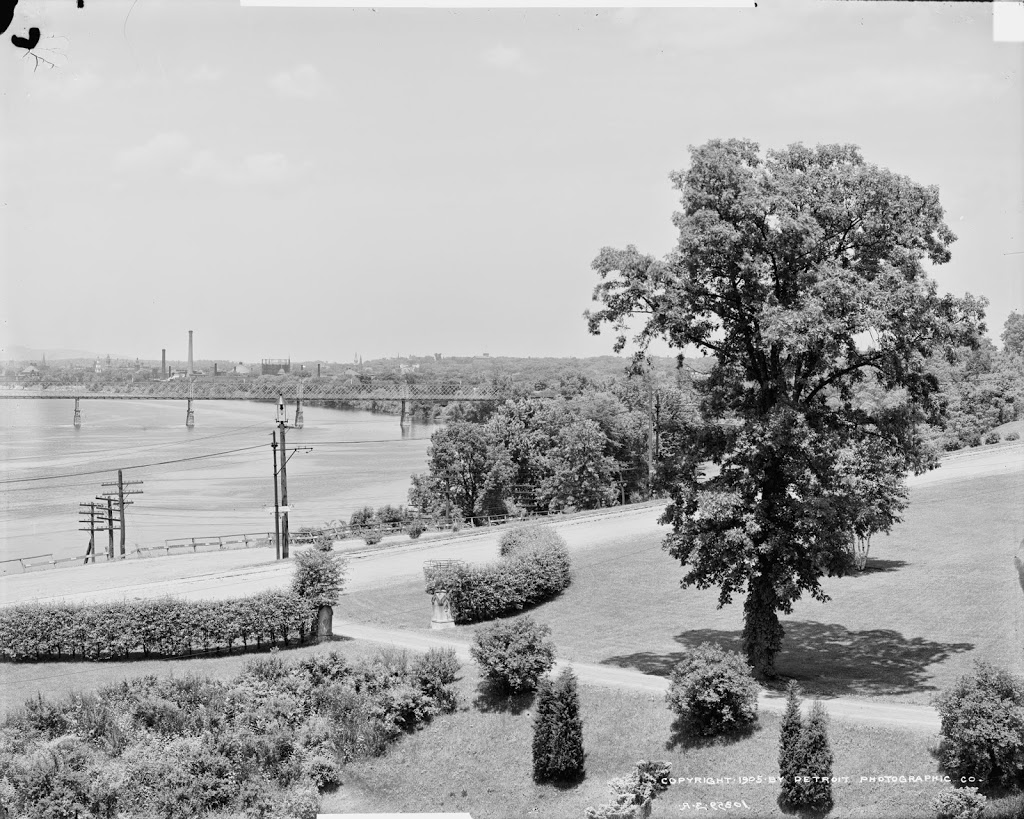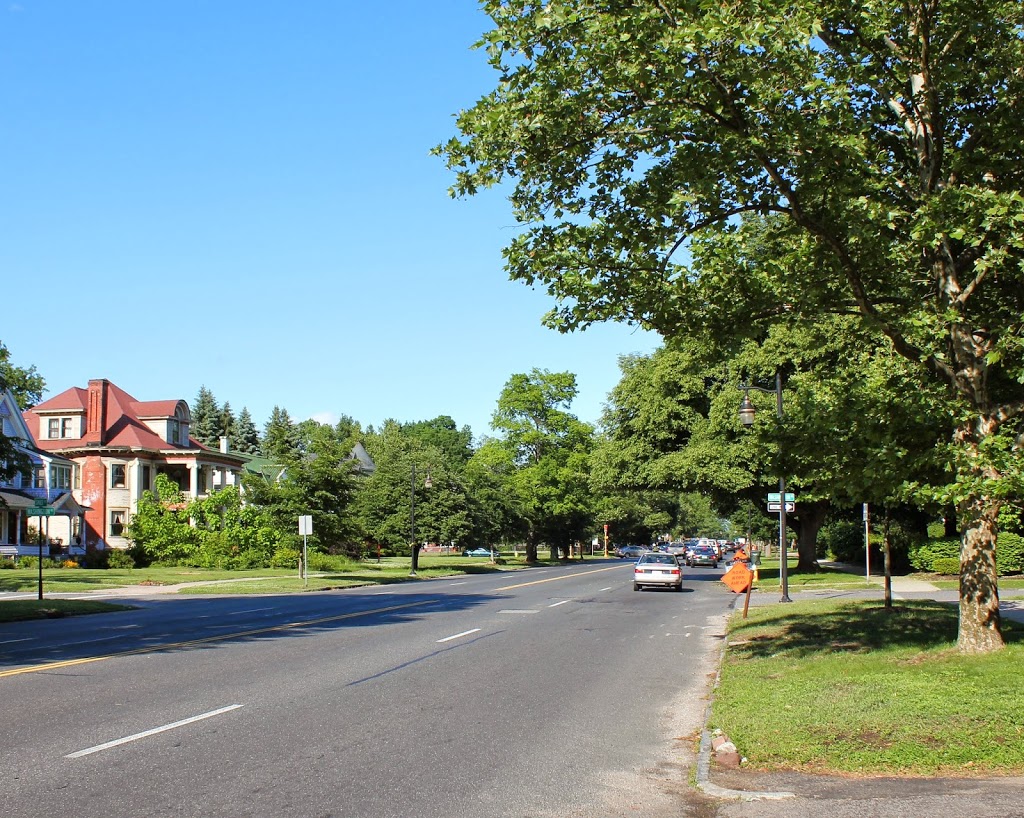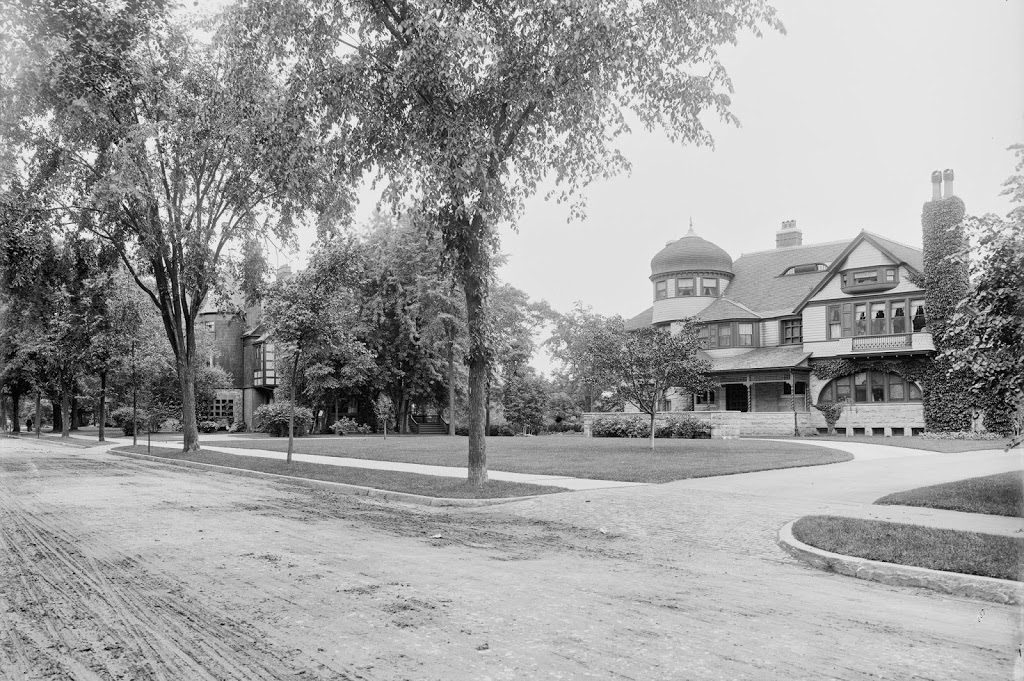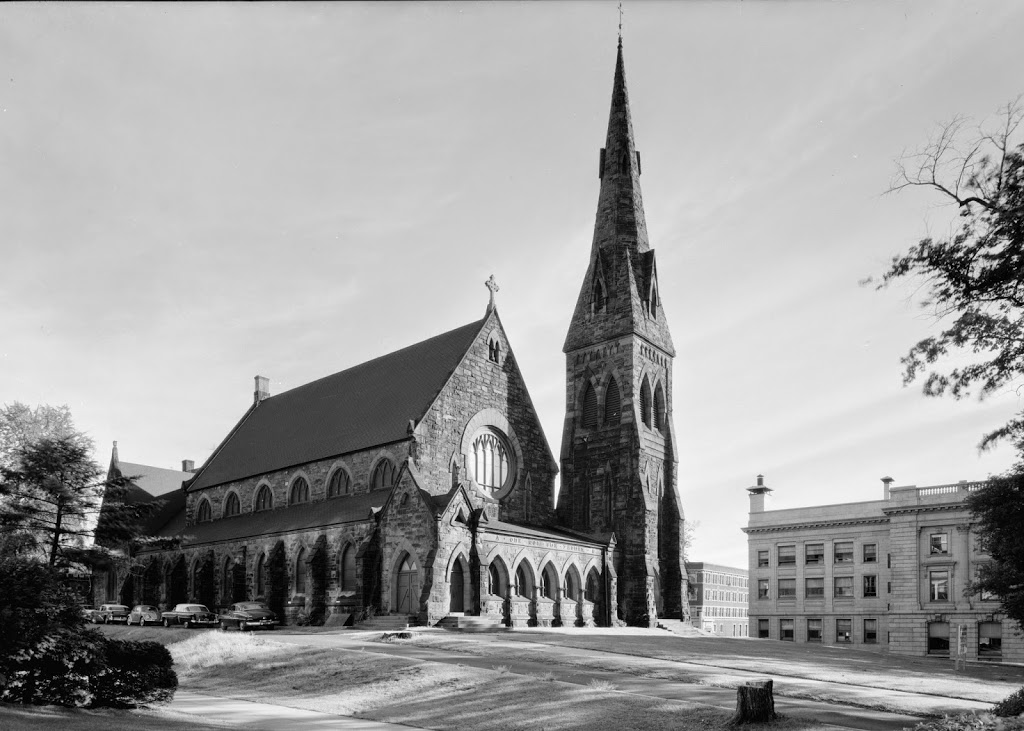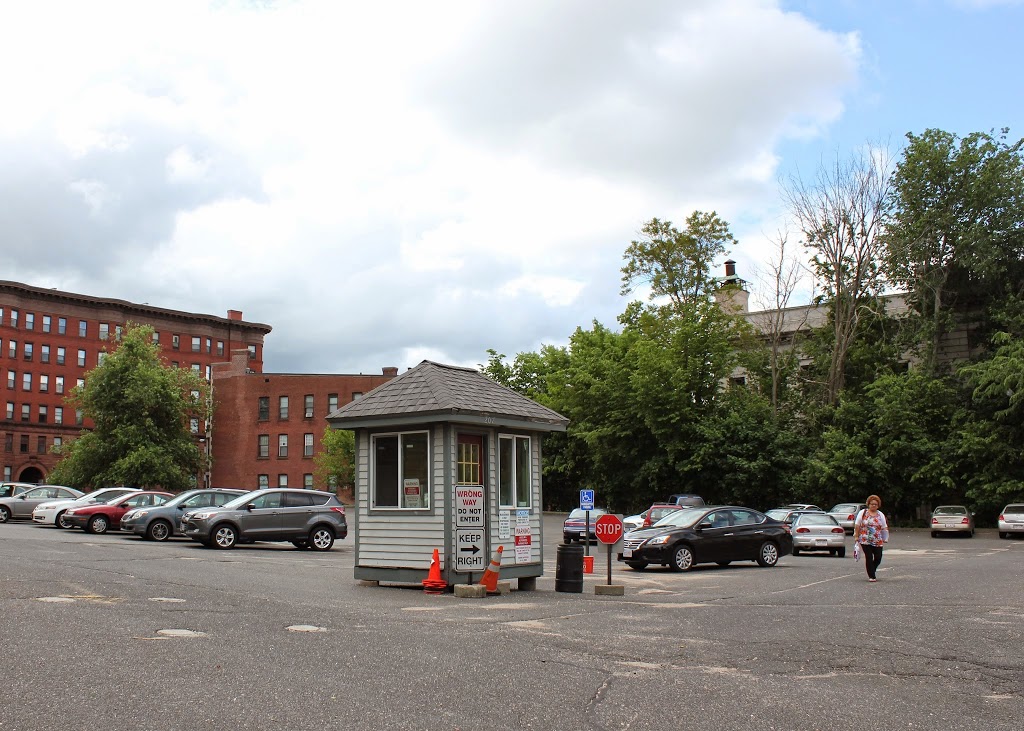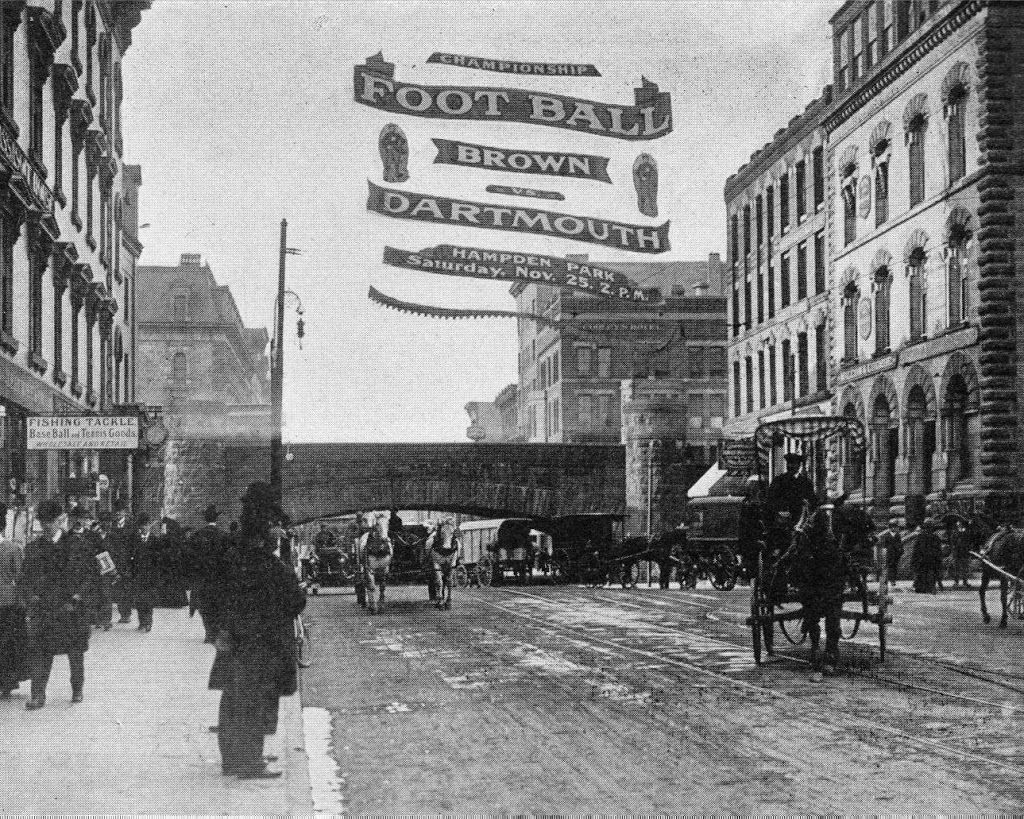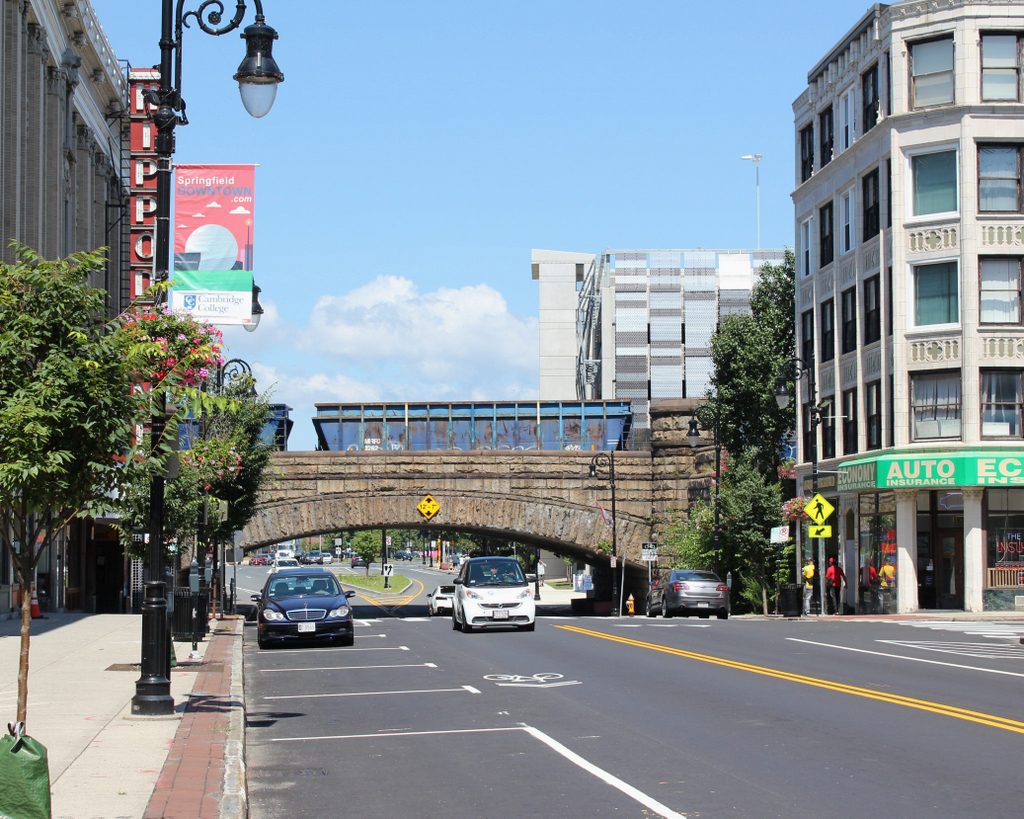The view looking toward Springfield from atop Laurel Hill in Forest Park, around 1905. Image courtesy of the Library of Congress, Detroit Publishing Company Collection.
The same view in 2014:
While driving along Interstate 91 through the Longmeadow curve, there is a semicircular retaining wall built into the side of the hill, with a flagpole on top. I had never paid much attention to it, but when I came across the first photo above, I wondered if that is where it was taken from. As it turns out, this overlook is part of what is called Laurel Hill, and is the section of Forest Park where the Barney Mausoleum is built. From the Mausoleum, it is just a short path to this overlook, which once offered views of the city of Springfield and the Connecticut River. Today, neither the city nor the river is visible from this spot, and the small dirt road barely visible in the 1905 photo is now Interstate 91.
From a traffic perspective, this is a major bottleneck in the Springfield area. Route 5 and I-91, which are combined in this short section, serve as the primary north-south transportation corridor in western New England, and link Springfield to Hartford and points south. However, because of the tight fit in trying to squeeze an interstate highway between the hills on the right and the railroad tracks on the left, I-91 is reduced to just two lanes, and that, combined with the many on/off ramps and curves, makes this a common site of traffic jams and accidents. It all looks so much more peaceful 100 years ago.

